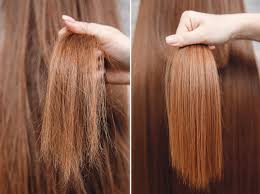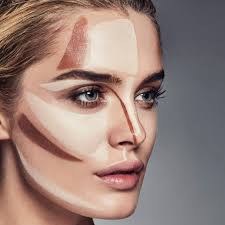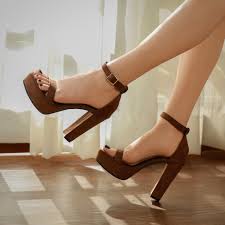Fashion
Can Hard Water Cause Hair Loss? Solutions, Treatments & Prevention Guide

Can Hard Water Cause Hair Loss? Solutions, Treatments & Prevention Guide
Hard water has become a silent enemy for many households worldwide. But the question remains: can hard water cause hair loss? The short answer is yes — and that’s just the tip of the iceberg. From dull, dry hair to persistent dandruff, hard water can seriously impact your hair and scalp health.
In this detailed guide, we’ll break down what is hard water, the link between hard water and hair loss, effective solutions like clarifying shampoo for hard water, and how to protect hair from hard water. You’ll also learn how to remove hard water from hair naturally, explore the benefits of a hard water softener, and discover the best hard water stain remover options. We’ll also look at some hard water hair before and after transformations to see just how dramatic the difference can be.
Let’s dive in.
What is Hard Water?
Before understanding its effects, it’s essential to answer: what is hard water?
Hard water refers to water that has high levels of minerals—mainly calcium and magnesium. While these minerals aren’t harmful to drink, they build up in pipes, on surfaces, and even on your scalp and hair, causing various issues.
“What is Hard Water”:
mineral-rich water
high calcium water
hard tap water
water hardness levels
magnesium in water
Understanding what is hard water is crucial because it influences how to protect hair from hard water, how to clean your home, and how to care for your appliances.
Can Hard Water Cause Hair Loss?
A growing number of people are asking: can hard water cause hair loss? The answer is a resounding yes.
Hard water can cause hair loss in several indirect ways:
Build-up on the scalp: Mineral deposits can block hair follicles.
Weakened strands: Hard water makes hair brittle and prone to breakage.
Dry scalp and dandruff: Irritation caused by mineral residue can lead to itching, flaking, and inflammation.
If you’re noticing your hair thinning, and you live in a region with hard tap water, then yes—hard water can cause hair loss.
“Can Hard Water Cause Hair Loss”:
hair thinning causes
scalp buildup
mineral deposits on hair
hair breakage from water
hard water hair damage
Clarifying Shampoo for Hard Water: A Must-Have
One of the most effective treatments is using a clarifying shampoo for hard water. These shampoos are formulated to:
Remove mineral build-up
Restore your hair’s natural shine
Balance your scalp pH
Prevent further damage caused by hard water
Investing in a clarifying shampoo for hard water is an essential step in your haircare routine, especially if you suspect hard water can cause hair loss.
“Clarifying Shampoo for Hard Water”:
anti-residue shampoo
detox shampoo
chelating shampoo
sulfate-free shampoo
deep cleansing shampoo
Use a clarifying shampoo for hard water once a week to keep your hair clean and healthy.
How to Protect Hair from Hard Water
Prevention is better than cure. So, let’s talk about how to protect hair from hard water. Here are the top strategies:
Install a shower filter
Use leave-in conditioner to create a protective barrier
Avoid excessive heat styling
Rinse with bottled or distilled water when possible
Use a clarifying shampoo for hard water regularly
“How to Protect Hair from Hard Water”:
hair protection tips
anti-hair loss solutions
water-safe hair care
healthy hair practices
mineral defense for hair
Knowing how to protect hair from hard water can save you from potential breakage and scalp issues.
How to Treat Dandruff from Hard Water
If you’re suffering from flakes and itching, it may be time to learn how to treat dandruff from hard water. Hard water can dry out your scalp and trigger flaking.
Steps to treat dandruff caused by hard water:
Use an anti-dandruff clarifying shampoo for hard water
Massage scalp with coconut or tea tree oil
Apply an apple cider vinegar rinse
Avoid daily washing to prevent over-drying
Related Keywords for “How to Treat Dandruff from Hard Water”:
flaky scalp treatment
anti-dandruff routine
dry scalp remedies
itchy scalp cure
scalp detox
By understanding how to treat dandruff from hard water, you can get your scalp back to a healthy balance quickly.
Hard Water Hair Before and After: Real Results
Still not convinced? Take a look at some hard water hair before and after results online, and you’ll be amazed.
Before hard water treatment, hair often looks:
Dull
Dry
Tangled
Frizzy
Flat
After using a clarifying shampoo for hard water and other solutions:
Hair becomes shinier
Softer
Easier to manage
Looks more voluminous
Feels more hydrated
“Hard Water Hair Before and After”:
hair transformation
mineral buildup removal
shiny hair results
soft hair after detox
improved hair texture
Hard water hair before and after photos clearly demonstrate how impactful hard water damage can be — and how treatable it is.
How to Remove Hard Water from Hair Naturally
Wondering how to remove hard water from hair naturally? Here are some effective DIY remedies:
Apple Cider Vinegar Rinse: Dilute with water and rinse post-shampoo
Lemon Rinse: Acts as a natural clarifier
Baking Soda Paste: Helps break down mineral buildup
Aloe Vera Gel: Moisturizes and soothes scalp
“How to Remove Hard Water from Hair Naturally”:
DIY hair detox
natural hair rinse
vinegar for hair
baking soda for scalp
lemon juice hair remedy
Learning how to remove hard water from hair naturally is both cost-effective and safe.
Hard Water Softener: A Permanent Fix
A hard water softener can eliminate the issue at the source. These devices remove calcium and magnesium from your water, turning it into soft water that’s gentle on your skin, hair, and appliances.
Installing a hard water softener:
Prevents scalp buildup
Reduces need for clarifying shampoo
Protects plumbing and appliances
Improves water quality for cooking and cleaning
Related Keywords for “Hard Water Softener”:
water filtration system
calcium filter
whole house water softener
limescale prevention
soft water solution
A hard water softener is a smart long-term investment if you live in an area with hard water.
Hard Water Stain Remover: Keep Everything Clean
Not only does hard water affect your hair, but it also leaves stubborn stains on faucets, tiles, glass, and more. That’s where a hard water stain remover comes in handy.
These cleaners:
Break down mineral deposits
Remove white film and spots
Restore shine to metal and glass
Prevent corrosion over time
Related Keywords for “Hard Water Stain Remover”:
calcium deposit cleaner
lime scale remover
mineral remover
faucet cleaner
shower glass cleaner
A reliable hard water stain remover can keep your home looking fresh and clean—while you focus on keeping your hair healthy.
Final Thoughts
To wrap things up, can hard water cause hair loss? Absolutely. But you don’t have to live with the damage. With consistent use of a clarifying shampoo for hard water, proper knowledge of how to protect hair from hard water, and natural solutions for how to remove hard water from hair naturally, you can reclaim healthy, vibrant hair.
Whether you’re trying to fix hard water hair before and after results, manage flakes by learning how to treat dandruff from hard water, or want to invest in a hard water softener, solutions are available and effective.
Don’t forget to also grab a hard water stain remover to clean your space while you’re at it.
By understanding what is hard water, its impact, and how to fix it, you’re one step closer to healthier hair, a cleaner home, and a better quality of life.

Fashion
How to Contour Your Face: A Complete Guide for Every Age and Skill Level

How to Contour Your Face: A Complete Guide for Every Age and Skill Level
Contouring has become one of the most popular makeup techniques in beauty. Learning how to contour your face properly can transform your features, enhance your natural bone structure, and give you a polished look without appearing overly done. Whether you’re a beginner or an older woman looking for subtle definition, this guide will show you an easy how to contour your face routine that works for everyone.
What Does Contouring Do?
When you learn how to contour your face, you are essentially playing with light and shadow. Darker shades create depth and slim down certain areas, while lighter shades highlight and bring forward the features you want to enhance. Many people believe contouring is complicated, but the truth is, there are easy how to contour your face techniques that even beginners can master.
Step-by-Step: How to Contour Your Face for Beginners
If you’re just starting out, you may wonder how to contour your face for beginners in a way that feels natural. Here’s a simple method:
Prep Your Skin – Always start with a clean, moisturized face.
Choose the Right Products – Powder contour is best for beginners, while creams give a more dramatic look.
Map Out Your Face – Apply contour under the cheekbones, along the jawline, and at the temples.
Blend, Blend, Blend – The secret to natural contouring is seamless blending.
Highlight the High Points – Add a light shade to the bridge of your nose, tops of your cheeks, and center of the forehead.
Following this routine makes how to contour your face with makeup much less intimidating.
Easy How to Contour Your Face: Quick Tips
If you don’t have much time in the morning, try this easy how to contour your face method:
Use a bronzer two shades darker than your skin.
Apply with an angled brush under your cheekbones.
Blend upward for a lifted look.
Sweep a soft highlighter across your cheekbones for instant glow.
This simplified version of how to contour your face is perfect for busy schedules.
How to Contour Your Face with Makeup: Choosing the Right Tools
Mastering how to contour your face with makeup isn’t just about placement—it’s also about tools. A fluffy blending brush will give a soft finish, while a beauty sponge helps with cream products. For precision, a small angled brush works best around the nose and jawline. With the right tools, you’ll discover that even an easy how to contour your face look can appear professional.
How to Contour Your Face as an Older Woman
If you’re wondering how to contour your face older woman, the key is subtlety. Heavy contouring can emphasize fine lines, but a soft hand creates a youthful lift. Use cream-based products, which blend smoothly and hydrate the skin. Apply lightly under the cheekbones and blend upward—this is the gentlest approach to how to contour your face older woman without making it appear harsh.
Here are three tips specifically for mature skin:
Stick to warm tones for a natural finish.
Avoid glittery highlighters; instead, choose a satin sheen.
Focus on lifting, not slimming, the features.
With these steps, how to contour your face older woman becomes more about elegance than drama.
Common Mistakes When Learning How to Contour Your Face
While figuring out how to contour your face, many beginners fall into these traps:
Using shades that are too dark.
Forgetting to blend properly.
Contouring in harsh lines instead of soft strokes.
If you want to know how to contour your face for beginners without errors, always remember: less is more.
Final Thoughts
Learning how to contour your face doesn’t have to be overwhelming. Whether you’re curious about how to contour your face with makeup, just starting with how to contour your face for beginners, or exploring how to contour your face older woman techniques, the basics remain the same: choose the right products, map your features, and blend thoroughly.
With practice, you’ll master an easy how to contour your face routine that enhances your natural beauty and boosts your confidence every single day.

Fashion
The Fascinating History of High Heels: From Royalty to Runways

The Fascinating History of High Heels: From Royalty to Runways
High heels have long been more than just shoes—they represent power, beauty, and cultural identity. To understand how stilettos and pumps became fashion staples, we need to look back at the history of high heels, tracing their origins, transformations, and cultural significance over time.
The Origins of High Heels
The history of high heels dates back centuries before they became fashionable. Many historians trace the origins of high heels to 10th-century Persia, where horsemen wore elevated shoes to secure their feet in stirrups. This practical purpose slowly evolved into a status symbol, showing that the wearer lived a life of wealth and privilege.
When examining the history of high heels, it becomes clear that they weren’t always associated with femininity. In fact, men in European courts adopted them during the 16th and 17th centuries to showcase authority and sophistication. This early chapter in the history of high heels timeline reveals that high heels were first about power, not fashion.
The History of High Heels in Royal Courts
By the Renaissance, the history of high heels had taken a glamorous turn. Royals like Catherine de’ Medici helped popularize them as symbols of elegance and status. This period marks an important shift in the history of high heels timeline, when footwear became a key part of fashion identity.
The evolution of high heels during this time showed clear gender distinctions: women embraced them for beauty, while men used them to emphasize social dominance. The origins of high heels as practical tools had now transformed into emblems of style.
Why Were High Heels Invented?
When asking why were high heels invented, the answer lies in a mix of practicality and symbolism. Originally, they were designed for horseback riding, but their cultural meaning shifted as they entered European fashion. The history of high heels timeline demonstrates how a practical design became a sign of luxury and refinement.
Later, during the 18th century, men abandoned them, leaving high heels as an almost exclusively feminine accessory. This moment in the history of high heels redefined them forever, solidifying their place in women’s wardrobes.
High Heels in Fashion History
The 19th and 20th centuries marked a turning point in high heels in fashion history. Shoe technology improved, and designers experimented with height, structure, and elegance. The history of high heels timeline during this era highlights iconic designs, from kitten heels to platform shoes.
The evolution of high heels accelerated after World War II, when Christian Dior’s “New Look” embraced stilettos as symbols of femininity. From Hollywood icons to everyday women, heels became essential for glamour and style.
High Heel Styles Through the Ages
Looking at high heel styles through the ages, we see dramatic shifts. The 1970s loved chunky platforms, the 1990s brought sleek pumps, and today’s designers mix practicality with bold statements. This constant reinvention shows how deeply the history of high heels is tied to culture and fashion trends.
Even in the 21st century, the evolution of high heels continues, blending heritage with innovation. Whether for empowerment, elegance, or artistry, their enduring appeal proves that the history of high heels timeline is far from over.
Conclusion: The Ongoing History of High Heels
The history of high heels is more than just a story about shoes—it’s a narrative of power, fashion, and identity. From Persian horsemen to Parisian runways, the origins of high heels reveal how footwear became a global symbol of beauty and strength.
As we trace the history of high heels timeline, one thing remains clear: high heels are not just accessories. They are cultural icons that continue to evolve, shaping how we walk, dress, and express ourselves.

Business
The Ultimate Guide to Miniature Painting: Tips, Tools, and Techniques

The Ultimate Guide to Miniature Painting: Tips, Tools, and Techniques
Miniature painting has become one of the most rewarding hobbies for artists, gamers, and collectors around the world. Whether you’re painting miniatures for tabletop games, working on decorative pieces, or exploring traditional Persian miniature painting, this art form combines patience, skill, and creativity. In this guide, we’ll cover everything you need to know about miniature painting, the essential tools you’ll need, and expert tips to help you get started.
What is Miniature Painting?
Miniature painting is the art of bringing small-scale figures or designs to life with detail and precision. From fantasy game characters to museum-worthy Persian miniature painting, the practice has evolved into a mix of traditional artistry and modern hobby craft. What makes miniature painting so exciting is the challenge: capturing depth, emotion, and realism on a tiny canvas.
Essential Miniature Painting Supplies
To succeed in this hobby, you’ll need the right miniature painting supplies. A basic setup should include:
Miniature painting brushes of different sizes for detail work.
A miniature painting handle to hold your model securely.
A miniature painting kit with paints, primer, and essential accessories.
The best wet palette for miniature painting to keep your paints fresh and workable.
Investing in quality supplies ensures cleaner results and makes the process much more enjoyable.
Choosing the Best Brushes for Miniature Painting
One of the most common questions beginners ask is: What are the best brushes for miniature painting? The answer depends on your budget and goals. Synthetic brushes are affordable and durable, while sable hair brushes offer superior precision for fine details. The best brushes for miniature painting should have a fine tip, good spring, and the ability to hold paint well.
Miniature Painting Kits for Beginners
If you’re just starting out, a miniature painting kit is a smart investment. These kits often include paints, brushes, and sometimes a miniature figure to practice on. Beginners can learn techniques like dry brushing, layering, and blending without spending too much upfront.
Tools That Make a Difference
Miniature painting is much easier with the right tools. A miniature painting handle keeps your hands steady, while a wet palette ensures your paint doesn’t dry too quickly. Many artists also recommend magnifying lamps to make details more visible.
Professional Miniature Painting Service
Not everyone has the time or skill to paint miniatures themselves. That’s where a miniature painting service comes in. These services allow you to commission skilled artists to paint your miniatures at a professional level. Whether it’s for a game army or a display model, a miniature painting service can bring your vision to life.
The Beauty of Persian Miniature Painting
While most people associate miniature painting with gaming, it’s important to acknowledge its roots. Persian miniature painting is a centuries-old tradition known for intricate details, vibrant colors, and storytelling elements. Learning from these historic works can inspire modern hobbyists to improve their skills and appreciate the depth of miniature art.
Tips for Success in Miniature Painting
Start simple: Practice on inexpensive figures before moving to premium models.
Use thin layers of paint to avoid losing detail.
Experiment with color schemes and lighting effects.
Take breaks to prevent eye strain and shaky hands.
Keep your miniature painting brushes clean and well-maintained.
Final Thoughts
Miniature painting is more than just a hobby—it’s a form of artistic expression. With the right miniature painting supplies, the best brushes for miniature painting, and tools like a miniature painting handle or wet palette, you can take your skills to the next level. Whether you choose to learn on your own with a miniature painting kit or hire a miniature painting service, this creative journey is worth every brushstroke.
From the elegance of Persian miniature painting to the thrill of customizing your own miniatures, the world of miniature painting offers endless possibilities. Start small, stay patient, and watch as your artistry grows with each model.

-

 Business2 months ago
Business2 months ago☕️The Ultimate Coffee Lover’s Guide: From Caffeine in a Cup of Coffee to Turkish Coffee Delights
-

 Business2 months ago
Business2 months agoThe Many Faces of “Future”: Markets, Farming, Music, AI, and a Better Tomorrow
-

 Health2 months ago
Health2 months agoA Journey Through Life’s Firsts: Health, Gaming, and Experiences That Shape Us
-

 Business2 months ago
Business2 months agoIn today’s fast‑moving economy, what industry is slowly dying and why?
-

 Lifestyle2 months ago
Lifestyle2 months agoWhat is life Philosophy?
-

 Tech1 month ago
Tech1 month agoUltimate Secret Android Apps You’ll Actually Love
-

 Business2 months ago
Business2 months agoRussia’s Energy Ministry Launches Crypto Mining Register
-

 Lifestyle2 months ago
Lifestyle2 months ago🐦 The Ultimate Bird Watching Guide: Best Birdwatching Locations & Tips for Beginners



